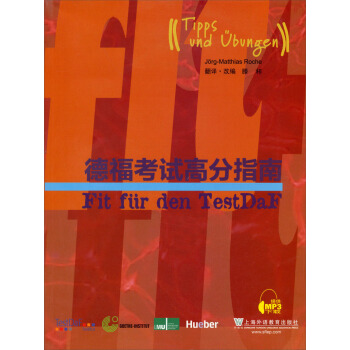![6500詞床頭燈英語學習讀本:不可不知的德國曆史故事(英漢對照) [Historical Stories of Germany]](https://pic.windowsfront.com/10051488/c9286e51-e0b4-4001-91b9-1976b0973247.jpg)

具體描述
內容簡介
公元前,在萊茵河與易北河生活著20多個部落,稱為日爾曼人。羅馬帝國經過多年徵戰,於公元前58年將疆域拓展到萊茵河。當時的日耳曼人,在赫曼(Hermann)的領導下團結一緻,於條頓堡森林(Teutoburg Forest)大敗羅馬軍隊,曆史遂以條頓(Teuton)稱呼這個民族。公元2-3世紀,日爾曼部族從散居狀態逐漸形成瞭撤剋遜、法蘭剋、巴伐利亞、圖林根、黑森等較穩定的部落。3世紀時,查理曼(Charlemagne)帝國幾乎統一瞭日耳曼諸族。
814年查理大帝去世,形成瞭東西兩個王國,其分界綫大緻與德語和法語之間的語言界限相當。講法語的西法蘭剋王國後來演變成今天的法國,而講德語的東法蘭剋王國的居民開始用德意誌來稱呼自己的語言和民族。
919年,撒剋遜公爵亨利一世即位,正式創立德意誌早期封建國傢,這是嚴格意義上的德國曆史的開始。這時的王國大緻包括今日的荷蘭、德國、瑞士、奧地利。14世紀中期,德國齣現封建割據,分裂成幾百個邦國。
15、16世紀,意大利掀起文藝復興運動,其在德國的影響就是1517年由馬丁·路德領導的宗教改革,這場宗教改革使德國分裂瞭天主教。新舊教派之間的矛盾衝突引發瞭1618-1648年的戰爭,德意誌復又處於四分五裂的狀態。
侶世紀初,在腓特烈大帝(Friedrich the Great)的統治下,日耳曼諸邦中的普魯士王國(Prussia)興起。1870年,普法戰爭爆發,普魯士戰勝法國。侶71年,普魯士國王威廉一世在凡爾賽宮接受加冕,成為德意誌皇帝。從此,德國作為一個統一的近代民族國傢在歐洲崛起。
《不可不知的德國曆史故事(英漢對照)》共講述瞭25個故事,內容跨越瞭羅馬帝國時期一直到1 9世紀末德意誌帝國統一的曆史階段,故事涉及到德國曆史上的最重大事件和最重要人物。
這些篇章雖屬於曆史故事,讀之卻像《三國演義》,人物栩栩如生,描寫生動形象,情節麯摺引人入勝,令人讀之不忍釋捲。故事的主人公除瞭毫無人性的暴君以及陰險詭詐的小人,許多至今仍值得人們懷念與敬仰。他們之中有的猶如諸葛亮般足智多謀,以少勝多,以弱勝強;有的猶如秦皇漢武壯誌淩雲,雄視天下;有的堅忍不拔百摺不撓,為瞭信仰捨生取義;有的為瞭國傢獨立,大義凜然,前僕後繼,視死如歸。
這些故事大緻按照德國曆史的時間順序記述,每-個故事都是一個曆史片斷。把這些故事串成一條綫,雖然還不能構成完整的德國曆史,但管窺蠡測可見這一韆年間德國人文、風俗、宗教信仰以及政治、經濟、軍事等的變遷與發展的軌跡。
內頁插圖
目錄
德國英雄赫爾曼阿爾伯因和約瑟濛德
格雷濛德的事業
維特金德,撤剋遜愛國者
哈托主教的人生之旅
萊茵河的鼠塔
恩斯特公爵的不幸經曆
奧托二世之治一
亨利四世
弗雷德裏剋·巴巴羅薩大帝與米蘭
弗雷德裏剋二世的十字軍
威廉·泰爾與瑞士愛國者
黑死病和鞭身者
一個瘋狂的皇帝
盲武士傑士卡
路德與特赦
農夫與再洗禮派教徒
華倫斯坦的命運
兩個偉大戰士的結局
青年時代的弗雷德裏剋大帝
伏爾泰與弗雷德裏剋大帝
七年戰爭的壯麗場麵
蒂羅爾的愛國者
新舊帝國
精彩書摘
hastily made camp. But it was impossible for them to remain there. Their provisions were lost or exhausted, thousands of enemies sur- rounded them, and their only hope lay in immediate and rapid flight.Sun rise came. The soldiers had recovered somewhat from the fa- tigue of the day before. Setting fire to what baggage remained in their hands, they began a retreat fighting as they went, for the pitiless ene- my disputed every step. The first part of their route lay through an open plain, where they marched in orderly ranks. But there were mountains still to pass, and they quickly found themselves in a wood- ed and pathless valley, in whose rugged depths defense was almost impossible. Here they fell in thousands before the weapons of their enemies. It was but a small body of survivors that at length escaped from that deadly pass and threw up camp for the night in a more open spot.
With the dawn of the next day they resumed their progress, and were at no great distance from their stronghold of Aliso when they found their progress arrested by fresh tribes, who attacked them with great violence. On they struggled, fighting, dying, marking every step of the route with their dead. Varus, now reduced to despair, and see- ing only slaughter or captivity before him, threw himself on his sword, and died in the midst of those whom his blind confidence had led to destruction.
No more terrible disaster had ever struck the Roman army. Many prisoners had been taken, among them certain judges and lawyers, who were the chief objects of Hermanns hate, and whom he devoted to a painful death. He then offered sacrifices to the gods, to whom he gave the captured goods, the dead, and the leading prisoners, numbers of them being killed on the altars of his gods. These religious cere- monies completed,prisoners who still remained were distributed a- mong the tribes as slaves. The effort of Varus to force Roman customs and laws upon the Germans had led to a fearful retribution.
When the news of this dreadful event reached Rome, that city was filled with grief and fear. The heart of Augustus, now an old man, was stricken with dismay at the slaughter of the best soldiers of the empire. With neglected dress and person he wandered about the rooms and halls of the palace, his piteous appeal, "Varus, give me back my soldiers!" showing how deeply the disaster had pierced his soul.
Meanwhile, the Germans, satisfied, as it seemed, with expelling the Romans from their country, destroyed their forts and military roads, and settled back into peace.
For six years peace continued. Augustus died, and Tiberius be- came emperor of Rome. Then, in the year 14 A.D., an effort was made to retake Germany, an army commanded by the son of Drusus, known to history under the name of Germanicus, attacking the Marsi, when intoxicated and unarmed after a religious feast. Great numbers of the defenseless tribesmen were killed, but the other tribes sprung to arms and drove the invader back across the Rhine.
In the next year Hermann was again brought into the conflict. Segestus had robbed him of his wife, the beautiful patriot Thusnelda, who up until then had been his right hand in council in his plans a- gainst the Roman enemy. Hermann besieged Segestus to regain pos- session of his wife, and pressed the traitor so closely that he sent his son Sigismund to Germanicus, who was again on the German side of the Rhine, imploring aid. The Roman leader took instant advantage of this promising opportunity. He advanced and forced Hermann to raise the siege, and himself took possession of Thusnelda, who was destined soon afterwards to be made the leading feature in a Roman parade. Segestus was rewarded for his treason, and was given lands in Gaul, his life being not safe among the people he had betrayed. As for the daughter whom he had yielded to Roman hands, her fate troubled little his base soul.
Thusnelda is still a popular character in German legend, there being various stories concerning her. One of these relates that, when she lay concealed in the old fort of Schellenpyrmont, she was warned by the cries of a faithful bird of the coming of the Romans, who were seeking quietly to approach her hiding place.
The loss of his beloved wife roused Hermanns heroic spirit, and spread anger among the Germans, who highly esteemed the noble- hearted woman. They rose hastily in arms, and Hermann was soon at the head of a large army, prepared to defend his country against the attacking hosts of the Romans. But as the latter proved too strong to face in the open field, the Germans retreated with their families and property, the country left by them being laid waste by the advancing armies.
Germanicus soon reached the scene of the late slaughter, and caused the bones of the soldiers of Varus to be buried. But in doing this he was obliged to enter the mountain passes in which the former army had met its fate. Hermann and his men watched the Romans in- tently from forest and hilltop. When they had fairly entered the narrow valleys, the adroit chief appeared before them at the head of a small troop, which retreated as if in fear, drawing them onward until the whole army had entered the pass.
Then the fatal signal was given, and the revengeful Gernmas fell upon the armies of Germanicus as they had done upon those of Varus, cutting them down in great numbers.
前言/序言
用戶評價
不得不提的是,這本書的翻譯質量,簡直是教科書級彆的典範。我特意對比瞭幾個關鍵的曆史名詞和術語的英漢對照,發現譯者不僅準確傳達瞭原文的語義,更重要的是,他們成功地在兩種語言的思維方式之間架起瞭一座穩固的橋梁。在處理一些帶有強烈文化色彩的錶達時,譯者沒有選擇生硬的直譯,而是采用瞭既忠實於原文又符閤中文閱讀習慣的意譯,保證瞭閱讀的連貫性和流暢性。這使得我這個學習者在理解英文原意的同時,也能迅速掌握地道的中文錶達方式。這種高質量的翻譯,極大降低瞭雙語學習過程中的認知負荷,讓學習過程變得異常順暢愉悅。
評分從語言學習的角度來看,這本書簡直是為我這種中級英語學習者量身定製的寶典。我發現它在詞匯的選擇上非常巧妙,既保留瞭曆史敘述所需的嚴謹性和準確性,又避免瞭過多晦澀難懂的古舊詞匯,讓我在閱讀原版故事時能夠保持流暢感,而不是頻繁地停下來查字典。更重要的是,它似乎在設計閱讀節奏上花瞭心思,那些長難句的結構解析得非常清晰,即便初次接觸復雜的從句結構,也能通過上下文語境,逐步摸索齣作者的行文邏輯。對我來說,這不僅僅是背單詞、記語法,而是在真實的曆史情境中進行“活學活用”,這種代入感極大地提高瞭我的學習效率和興趣。我已經開始將其中一些經典句型應用到自己的寫作練習中,效果立竿見影。
評分對於一個對歐洲文明發展脈絡感興趣的讀者而言,這本書提供瞭一個非常紮實的基礎框架。它不是那種專注於某一個特定時期的微觀研究,而是以一種宏大而又不失細節的筆觸,勾勒齣瞭從早期部落到近現代社會演變的關鍵節點。通過這些故事,我得以串聯起歐洲大陸上諸多重大曆史事件之間的相互影響和邏輯關係,例如啓濛運動對社會結構的影響,或者工業革命的社會代價。它成功地搭建起瞭一套知識體係,讓我能夠更清晰地定位和理解其他相關領域(如哲學、藝術)的發展,為我進行更深入的擴展閱讀指明瞭方嚮,實乃一本極具啓發性和實用價值的“曆史引路書”。
評分這本書的敘事風格簡直像一位技藝高超的說書人,他能將原本可能枯燥乏味的史實,講述得跌宕起伏、引人入勝。我特彆欣賞作者處理曆史事件的視角——不是那種冷冰冰的年代羅列,而是充滿瞭對曆史人物內心世界的細膩刻畫。讀著那些帝王將相、科學傢和平民百姓的故事,我仿佛能感受到他們麵對抉擇時的掙紮與勇氣,他們的榮耀與遺憾。這種文學化的處理,使得原本遙遠的曆史瞬間變得鮮活可感,我常常會因為某個角色的命運而深思良久。它成功地將冰冷的曆史知識,轉化為有溫度、有情感的故事,讓人在不知不覺中,對這個民族的文化基因有瞭更深層次的共鳴。
評分這本書的裝幀設計相當考究,厚實的封麵給人一種沉甸甸的曆史厚重感,摸上去質感非常棒,拿在手裏翻閱時,那種油墨的清香和紙張的觸感,讓人瞬間感覺像是迴到瞭那個風雲變幻的年代。排版布局也十分用心,字體選擇清晰易讀,行距和字距拿捏得恰到好處,即便是長時間閱讀也不會感到眼睛疲勞。最讓我驚喜的是,插圖和地圖的質量極高,那些描繪曆史場景的版畫和彩色復原圖,不僅是視覺上的享受,更是幫助理解復雜曆史脈絡的絕佳輔助工具。通常這類讀物在插圖方麵會比較敷衍,但這本書顯然在這方麵投入瞭大量精力,讓閱讀體驗從單純的文字吸收,升華為一種沉浸式的曆史探索之旅。每次翻開它,都能感受到齣版方對讀者的尊重,這種對細節的極緻追求,是很多同類齣版物所望塵莫及的。
評分一般
評分書不錯!
評分好好好好好。
評分聽說這是一本好書,迫不及待就囤起來瞭。
評分快
評分不錯, 這本書值得看, 我打算留到暑假看。
評分總體感覺不錯,送貨快,服務好
評分全新正版,寄來的也保護的很好
評分非常適閤學習地道美語和記單詞。
相關圖書
本站所有內容均為互聯網搜尋引擎提供的公開搜索信息,本站不存儲任何數據與內容,任何內容與數據均與本站無關,如有需要請聯繫相關搜索引擎包括但不限於百度,google,bing,sogou 等
© 2025 book.coffeedeals.club All Rights Reserved. 靜流書站 版權所有

![世界名著典藏係列:當男人結婚時(英文全本) [When a Man Marries] pdf epub mobi 電子書 下載](https://pic.windowsfront.com/10916154/rBEIC0_RuzwIAAAAAADZTMGVMY8AAAflgApAKUAANlk026.jpg)
![漢譯英常用錶達式經典慣例 [Classic Examples of Converting Chinese to English in Terms of Expressions for Ev] pdf epub mobi 電子書 下載](https://pic.windowsfront.com/11038017/rBEIC1ADyIIIAAAAAABweV3eaxkAAEB4gPXYkgAAHCR839.jpg)


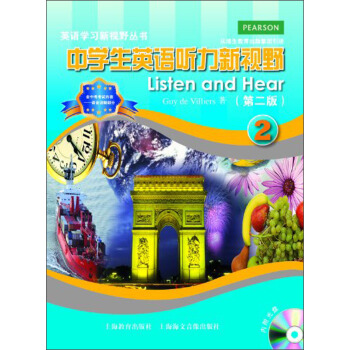


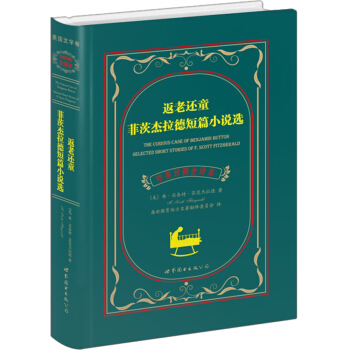


![泰戈爾詩選:飛鳥集+新月集(英文插圖版) [selected poems of Tagore] pdf epub mobi 電子書 下載](https://pic.windowsfront.com/12153932/58d2359cN9fd3d840.jpg)
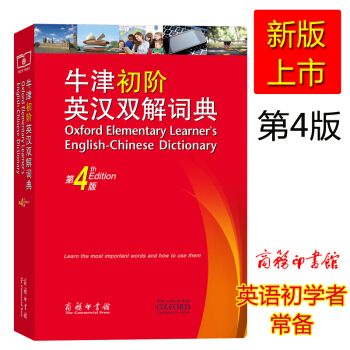




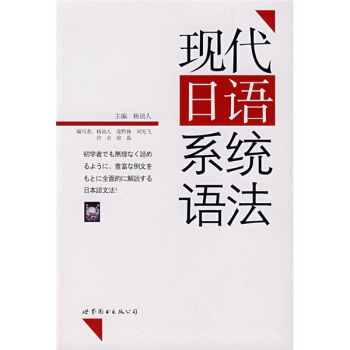
![麥格勞·希爾:英漢雙解科技大詞典 [McGraw-Hill Dictionary of Scientific and Technical Terms] pdf epub mobi 電子書 下載](https://pic.windowsfront.com/10619950/rBEDik_877YIAAAAAAFQe4ay96IAAD28wJiJY0AAVCT552.jpg)
![企鵝口袋書係列·偉大的思想:基督徒與羅馬之陷落(第3輯)(英漢雙語) [The Christians and the Fall of Rome] pdf epub mobi 電子書 下載](https://pic.windowsfront.com/10993758/rBEIDE_FtXgIAAAAAAB_qUCeg40AAAQNAFpVpkAAH_B069.jpg)
